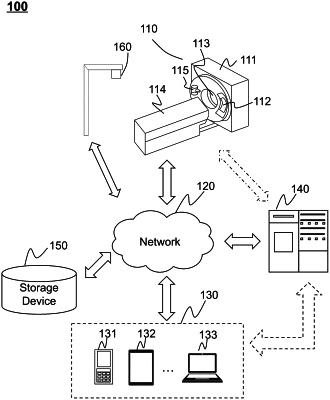| CPC G06T 7/75 (2017.01) [G06T 7/74 (2017.01); G06T 2207/10024 (2013.01); G06T 2207/10028 (2013.01); G06T 2207/20081 (2013.01); G06T 2207/30004 (2013.01); G06T 2207/30196 (2013.01)] | 20 Claims |

|
1. A system for patient positioning, comprising:
at least one storage device including a set of instructions; and
at least one processor configured to communicate with the at least one storage device, wherein when executing the set of instructions, the at least one processor is configured to direct the system to perform operations including:
acquiring image data relating to a patient holding a posture;
identifying at least one interest point of the patient from the image data using an interest point detection model;
determining at least one body landmark representing at least one characteristic region of the patient according to information provided by a user;
acquiring a plurality of patient models, each patient model representing a reference patient holding a reference posture, and including at least one reference interest point of the reference patient, at least one reference body landmark of the reference patient, and a reference representation of the reference posture; and
determining, based on a comparison between the at least one interest point of the patient and the at least one reference interest point in each of the plurality of patient models in combination with a comparison between the at least one body landmark of the patient and the at least one reference body landmark in each of the plurality of patient models, a representation of the posture of the patient, wherein the interest point detection model is generated by:
obtaining a plurality of training samples, each training sample including sample image data of a sample patient holding a first posture and a representation of the first posture;
obtaining a preliminary model;
generating a posture representation determination model by training the preliminary model using the training samples according to a machine learning algorithm, the posture representation determination model being used to receive first image data of a first subject and output a representation of a posture of the first subject based on the first image data; and
designating a portion of the posture representation determination model as the interest point detection model, the interest point detection model being used to receive second image data of a second subject and output interest points of the second subject based on the second image data.
|